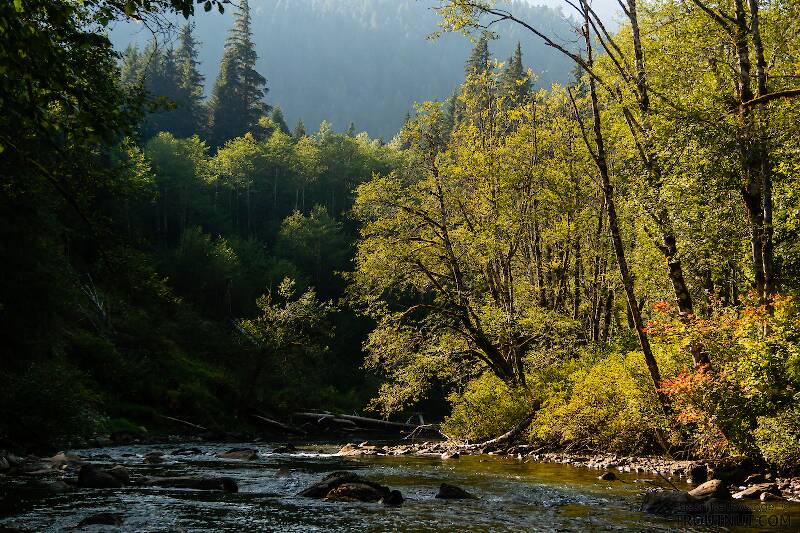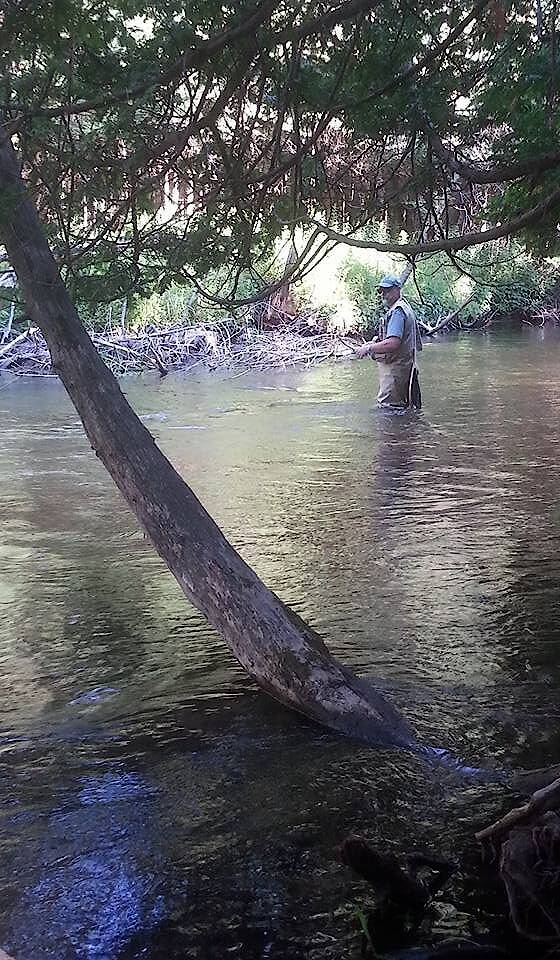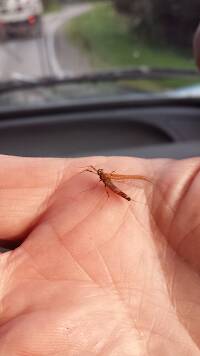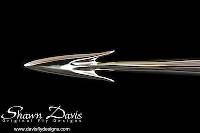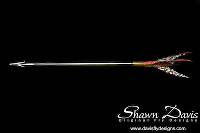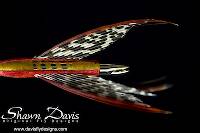
Blue-winged Olives
Baetis
Tiny Baetis mayflies are perhaps the most commonly encountered and imitated by anglers on all American trout streams due to their great abundance, widespread distribution, and trout-friendly emergence habits.
Featured on the forum

This is a striking caddis larva with an interesting color pattern on the head. Here are some characteristics I was able to see under the microscope, but could not easily expose for a picture:
- The prosternal horn is present.
- The mandible is clearly toothed, not formed into a uniform scraper blade.
- The seems to be only 2 major setae on the ventral edge of the hind femur.
- Chloride epithelia seem to be absent from the dorsal side of any abdominal segments.
Based on these characteristics and the ones more easily visible from the pictures, this seems to be Grammotaulius. The key's description of the case is spot-on: "Case cylindrical, made of longitudinally arranged sedge or similar leaves," as is the description of the markings on the head, "Dorsum of head light brownish yellow with numerous discrete, small, dark spots." The spot pattern on the head is a very good match to figure 19.312 of Merritt R.W., Cummins, K.W., and Berg, M.B. (2019). The species ID is based on Grammotaulius betteni being the only species of this genus known in Washington state.
- The prosternal horn is present.
- The mandible is clearly toothed, not formed into a uniform scraper blade.
- The seems to be only 2 major setae on the ventral edge of the hind femur.
- Chloride epithelia seem to be absent from the dorsal side of any abdominal segments.
Based on these characteristics and the ones more easily visible from the pictures, this seems to be Grammotaulius. The key's description of the case is spot-on: "Case cylindrical, made of longitudinally arranged sedge or similar leaves," as is the description of the markings on the head, "Dorsum of head light brownish yellow with numerous discrete, small, dark spots." The spot pattern on the head is a very good match to figure 19.312 of Merritt R.W., Cummins, K.W., and Berg, M.B. (2019). The species ID is based on Grammotaulius betteni being the only species of this genus known in Washington state.

Troutnut is a project started in 2003 by salmonid ecologist Jason "Troutnut" Neuswanger to help anglers and
fly tyers unabashedly embrace the entomological side of the sport. Learn more about Troutnut or
support the project for an enhanced experience here.
Byhaugh on Oct 21, 2014October 21st, 2014, 10:16 pm EDT
I was looking at an old FlyCraft paper caliper device. I never used one myself, but have seen them.
My question is this: how many believe the Golden Ratio applies, for example , to the placement of the wing on a hook?
I have watched many highly respected tiers place the wing at the 75% mark of the shank length (for example). Others, say to place the wing at "...approximately the 2/3 mark of the hook shank."
If the Golden a Ratio applies to this aspect of an insect's wing location represented on a hook shank.....and if I have done the math correctly, it would fall at the 62% mark.
I'm not talking about some Balancing reason, but strictly trying to imitate the appearance of the natural.
Your thoughts?
Thanks
My question is this: how many believe the Golden Ratio applies, for example , to the placement of the wing on a hook?
I have watched many highly respected tiers place the wing at the 75% mark of the shank length (for example). Others, say to place the wing at "...approximately the 2/3 mark of the hook shank."
If the Golden a Ratio applies to this aspect of an insect's wing location represented on a hook shank.....and if I have done the math correctly, it would fall at the 62% mark.
I'm not talking about some Balancing reason, but strictly trying to imitate the appearance of the natural.
Your thoughts?
Thanks
Taxon on Oct 21, 2014October 21st, 2014, 10:45 pm EDT
Hi Byron-
Not to imply that I have any useful thoughts, but simply in the interest of clarifying your question, are you referring to mayflies?
Your thoughts?
Not to imply that I have any useful thoughts, but simply in the interest of clarifying your question, are you referring to mayflies?
Byhaugh on Oct 21, 2014October 21st, 2014, 10:50 pm EDT
Roguerat on Oct 22, 2014October 22nd, 2014, 12:17 pm EDT
Byron,
I was relating this post to Fibonacci's Number, which corresponds to 61% more or less...I use it a lot in cabinet-making, my other $$$$$ vice and semi-retirement it's supposed to make money hobby.
I'd like to see a good side-view (elevation, so to speak) of a given natural but it makes sense that the proportions apply, somehow.
Welcome to the Forum, you've been here a while but hi anyway!
Roguerat
I Peter 5:7 'Cast your cares upon Him..'
I was relating this post to Fibonacci's Number, which corresponds to 61% more or less...I use it a lot in cabinet-making, my other $$$$$ vice and semi-retirement it's supposed to make money hobby.
I'd like to see a good side-view (elevation, so to speak) of a given natural but it makes sense that the proportions apply, somehow.
Welcome to the Forum, you've been here a while but hi anyway!
Roguerat
I Peter 5:7 'Cast your cares upon Him..'
Quick Reply
Related Discussions
Topic
Replies
Last Reply
4
Feb 14, 2015
by Millcreek
by Millcreek
11
Apr 24, 2014
by Brookyman
by Brookyman

